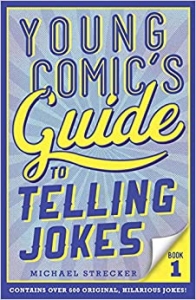For Humor and Allusions in Blogs, Make Sure Readers Don’t “Huh?”
“Know your audience. Not everyone will think every joke is funny,” advises Michael Strecker in the book Young Comic’s Guide to Telling Jokes. Strecker’s advice applies to blog content writing, as we’ve learned through experience at Say it For You.
One reason certain jokes fall flat with certain audiences, I’m convinced, is not that those jokes are offensive or unfunny. It’s that many jokes are based on a cultural allusion that is simply not familiar to that audience.
A cultural allusion is an indirect reference to a person, place, or idea that is not directly described. Here are a few of Strecker’s jokes that will be funny to you only if you happen to recognize the allusion to history, literature, mathematics, geology, or the Bible…….
- What was the sea creatures’ strike called? Octopi Wall Street.
(The allusion is to the protest movement against economic inequality that started in New York City and which was named Occupy Wall Street.) - Who invented the ball point pen? The Incas.
(The allusion is to the ancient Incan empire in the country of Peru.) - Why was the precious metal so silly? It was fool’s gold.
(The allusion is to the metal pyrite, which has no value, but which resembles gold in its appearance. Many treasure-seekers foolishly mistook pyrite for gold.) - How did the dentist pay for his vision exam? An eye for a tooth.
(The allusion is to a passage from the Bible about punishing a man who injures another – “An eye for an eye, a tooth for a tooth…) - What do you do at a math party? East pi and square dance.
(The allusion is to pi, which is the ration of a circle’s circumference to its diameter, approximately 3.14.) - What do you call a street where Shakespeare, Edgar Allen Poe, and James Patterson live? Writer’s Block.
(The allusion is to three famous writers and to a psychological “block” in which a person represses painful thoughts of memories.)
In blog marketing, we might choose to use an allusion to get a point across without going into a lengthy explanation. Or, we might want to get readers thinking about our subject in a new way. We might even use allusions to cement a bond between our client and the blog readers, showing the business owner or practitioner has experienced some of the same problems and obstacles as their customers now face.
There’s only one problem – an allusion does not describe in detail the person or thing to which it’s referring – readers have to recognize the allusion. As content writers, we need to gauge our readers’ areas of interest and even their level of education. If they simply don’t know the underlying story, literary tale or other reference point, we could be leaving them scratching their heads, and asking “Huh?”


Leave a Reply
Want to join the discussion?Feel free to contribute!